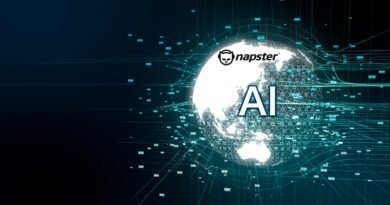Agentic AI: The Next Evolution of Autonomous Intelligence
🔍 What Is Agentic AI?
Agentic AI refers to artificial intelligence systems capable of autonomous goal-driven reasoning, decision-making, and action execution. Unlike traditional AI models that rely on fixed prompts or pre-programmed outputs, Agentic AI agents dynamically interact with their environment, use external tools, and adapt their strategies to achieve objectives independently.
In simple terms, Agentic AI shifts from being a reactive model to a proactive digital agent — capable of planning, reasoning, and self-improving.
⚙️ Key Characteristics of Agentic AI
| Feature | Description |
|---|---|
| Autonomy | Acts without explicit instructions once a goal is set. |
| Tool Integration | Uses APIs, databases, or apps dynamically. |
| Memory & Context Awareness | Retains past interactions for continuous learning. |
| Multi-Modal Reasoning | Integrates text, images, and structured data. |
| Ethical Awareness | Balances autonomy with transparency and accountability. |
🧩 Technical Foundations
1. Cognitive Architecture
Agentic AI mimics the cognitive loop of humans — observe, reason, act, and learn.
- Perception Layer: Collects data from environment and sensors (APIs, user input).
- Reasoning Layer: Applies logical and probabilistic models (e.g., LLM reasoning, rule-based systems).
- Action Layer: Executes plans using integrated tools or APIs.
- Feedback Loop: Evaluates performance and updates its strategy.
2. Core Frameworks and Tools
- LangChain: For chaining LLM-based reasoning with memory and tools.
- OpenAI GPT models / Anthropic Claude: For high-level reasoning.
- Vector Databases (Pinecone, FAISS, Chroma): For long-term memory.
- FastAPI or Flask: For API deployment.
- Celery + Redis: For task scheduling and multi-agent orchestration.
- GuardrailsAI or Pydantic: For output validation and ethical constraints.
🧠 Reference Architecture Diagram
Below is a simplified conceptual architecture for an Agentic AI system:
┌────────────────────────────┐
│ User / System │
└──────────────┬─────────────┘
│
┌─────────────▼─────────────┐
│ Perception Layer │
│ (Input, Context, Memory) │
└─────────────┬─────────────┘
│
┌─────────────▼─────────────┐
│ Reasoning Engine │
│ (LLM + LangChain Agents) │
└─────────────┬─────────────┘
│
┌─────────────▼─────────────┐
│ Action Executor │
│ (APIs, Tools, Functions) │
└─────────────┬─────────────┘
│
┌─────────────▼─────────────┐
│ Feedback & Ethics │
│ (Validation, Safety, Log) │
└────────────────────────────┘
💻 Building an Agentic AI Prototype in Python (with LangChain)
Let’s implement a simple autonomous research agent using LangChain and OpenAI tools.
🔧 Prerequisites
pip install langchain openai python-dotenv requests
🧩 Example Code
from langchain.agents import initialize_agent, load_tools
from langchain.llms import OpenAI
from langchain.memory import ConversationBufferMemory
import os
# Load API key
os.environ["OPENAI_API_KEY"] = "your_api_key_here"
# Initialize LLM
llm = OpenAI(temperature=0.3)
# Load tools (search, calculator, etc.)
tools = load_tools(["serpapi", "llm-math"], llm=llm)
# Memory for context
memory = ConversationBufferMemory(memory_key="chat_history")
# Initialize agent
agent = initialize_agent(
tools=tools,
llm=llm,
agent="zero-shot-react-description",
memory=memory,
verbose=True
)
# Test the agent
response = agent.run("Research top AI companies in 2025 and summarize their innovations.")
print(response)
This example builds an autonomous reasoning loop where the agent:
- Accepts a high-level goal
- Searches online for information
- Summarizes results using contextual memory
- Produces validated, human-readable output
⚖️ Ethical and Governance Considerations
Building Agentic AI introduces new layers of ethical responsibility:
- Transparency: Every autonomous action must be logged and explainable.
- Human Oversight: Agents should include “human-in-the-loop” fail-safes.
- Bias & Data Privacy: Memory persistence must comply with data governance laws (e.g., GDPR, DPDP Act).
- Moral Alignment: Reward functions and reasoning paths must align with human values and organizational goals.
AI ethics frameworks like IEEE 7000, EU AI Act, and NIST RMF should guide design and deployment.
🚀 Future Scope
By 2030, Agentic AI is expected to evolve into:
- Self-healing systems that adapt to failures autonomously.
- Collaborative multi-agent ecosystems across industries.
- AI-driven research scientists capable of hypothesis testing and innovation cycles.
Agentic AI is not just a step forward — it’s the foundation for true artificial general intelligence (AGI).
🌍 Real-World Applications
- Enterprise AI Assistants: Automating workflows, CRM, and research
- Autonomous Research Agents: Data analysis and trend forecasting
- AI Operations Management (AIOps): Predictive maintenance and response
- Healthcare & Biotech: Diagnostic reasoning and report generation
- Finance: Intelligent trade execution and anomaly detection
🧩 Key Takeaways
- Agentic AI represents autonomous, reasoning-based intelligence.
- Tools like LangChain and vector memory enable practical development.
- Ethical design and transparent governance are non-negotiable.
- Open-source collaboration and modular frameworks will drive next-gen AI ecosystems.
⚖️ Agentic AI vs Generative AI — Key Differences
| Feature | Generative AI | Agentic AI |
|---|---|---|
| Primary Goal | Generate creative content | Achieve defined objectives autonomously |
| Control Type | Reactive (prompt-based) | Proactive (goal-based) |
| Memory | Stateless or short-term | Long-term, contextual memory |
| Tool Use | Limited or static | Dynamic tool & API integration |
| Learning Cycle | No feedback loop | Continuous reasoning and adaptation |
| Ethical Layer | Output moderation | Action validation and moral alignment |
| Examples | GPT-4, Midjourney, Stable Diffusion | LangChain Agents, AutoGPT, BabyAGI |
❓ Frequently Asked Questions (FAQs)
Agentic AI can autonomously reason, plan, and act toward goals, while Generative AI focuses on producing creative outputs based on prompts.
Yes. By integrating memory, tool use, and goal-based reasoning (e.g., via LangChain), a generative model can evolve into an agentic system.
Yes, when combined with human oversight, ethical validation, and strict access controls. It must follow transparency and accountability standards.
LangChain, AutoGen, MetaGPT, and LlamaIndex are popular frameworks for creating multi-agent or autonomous reasoning systems.
No — it will augment human capability, handling repetitive reasoning tasks while humans focus on creative and ethical oversight.




